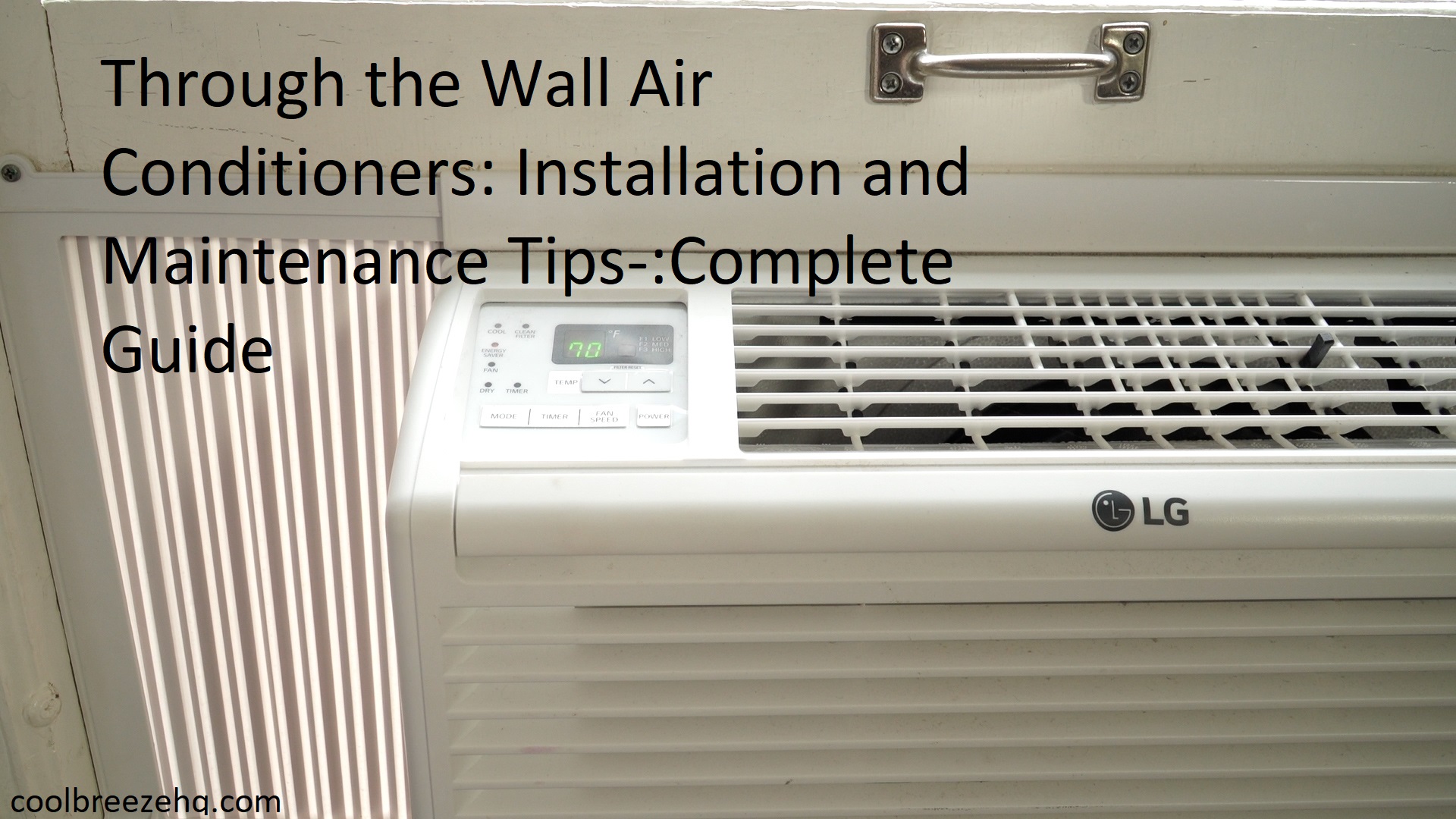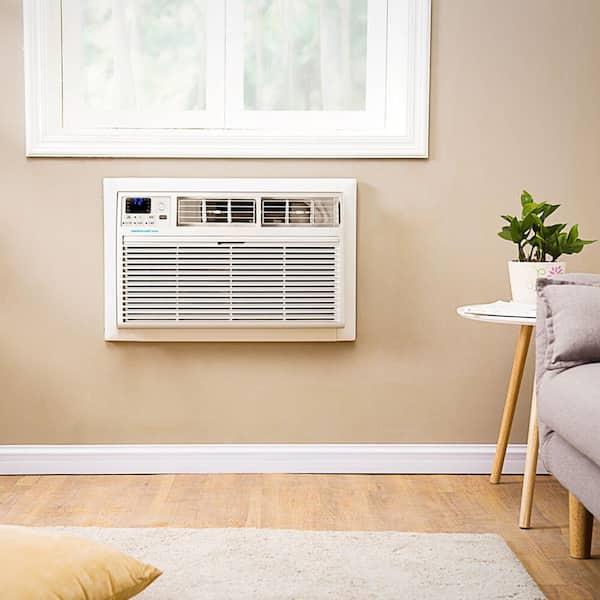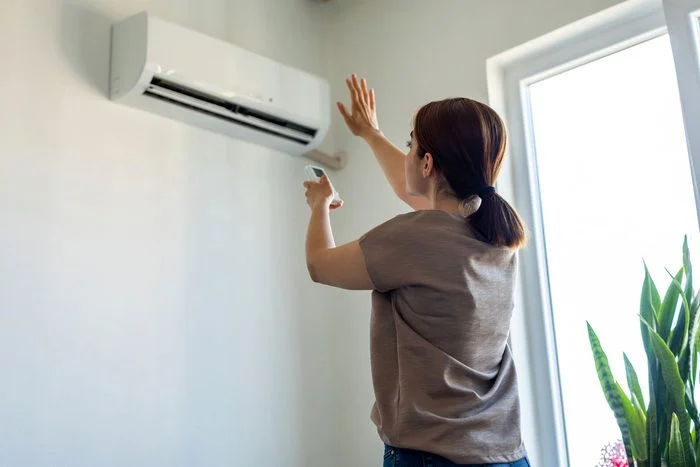Struggling to keep your room cool during the hot summer months? You’re not alone. Installing a Through the Wall Air Conditioner can offer you relief and comfort.
In this guide, you’ll learn all the essentials for proper installation, maintenance, and repair of Through Wall Air Conditioners.
Installing a Through the Wall Air Conditioner (TWA) allows you to equip your home with an efficient cooling system that saves energy, works silently and is easy to maintain. TWA air conditioners are available in various sizes and styles, so you can choose the perfect system for your space.
In this complete guide to Through The Wall Air Conditioners, we’ll show you how to properly install and maintain these units. We will also explore the different types available and discuss important safety tips to keep in mind when using them. By the end of this guide you should be knowledgeable enough on TWAs that you can confidently purchase one for your home or business.
Definition of through the wall air conditioners
Through the wall air conditioners, also referred to as thru-the-wall air conditioners, are self-contained units that are secured through the exterior wall of a residential building. These types of air conditioners do not require permanent installation and can be easily voilently removed and reinstalled in different locations.
The primary benefit of a through the wall air conditioner is that it provides cooling quickly and efficiently to one room in your home, rather than needing to cool all areas of your house at once, which is what happens when with central air conditioning systems. Through the wall air conditioners are also effective at controlling humidity levels indoors, making them an excellent option for homes without central air conditioning units or those in wet climates.
These clearly defined and separate units have no visible exterior components or grilles on the outside of your home. They’re most commonly used for single rooms or smaller spaces due to their limited cooling capacity, although newer models come with added features such as energy efficiency and multiple heating capabilities.
To get started with a through the wall air conditioner in your home, be sure to familiarize yourself with installation requirements and safety considerations before purchasing one.
Installation
Installing a through-the-wall air conditioner is not overly complicated. However, it must be done correctly to protect your valuable equipment and ensure efficient operation. Here are the basic steps for installation:
- Open the wall sleeve openings from the exterior to begin installing your through-the-wall unit. Ensure that all four sides of the wall sleeve are opened with the appropriate size holes cut for wiring, piping and air ducts.
- Install mounting screws into the wall sleeve to secure it in place and make sure it is level. Make sure all sides of the wall sleeve are flush against the outside of your home or building.
- Connect refrigerant lines between indoor and outdoor units once they are positioned in their respective places. Consider using a professional HVAC contractor if you need assistance with this step as improper refrigerant line connections can cause a significant loss in cooling efficiency.
- Insert wiring and condensate drain tubing through each side of wall sleeve opening that connects indoor and outdoor units.
- Install interior trim and associated hardware using mounting screws or provided fasteners such as clamps or brackets.
6 Lastly, insert external grill into place by pushing gently from inside of home/building towards exterior until you hear a “click” or “snap” indicating secure fitment.
Selecting the right location
When selecting a location for your through-the-wall air conditioner, there are several important factors to consider. One important factor is that the space between the wall and the unit should be sufficient to ensure proper air flow. Ideally, this space should be at least four inches wider than the unit and two inches taller than it for best results. This helps to create an even airflow and gives room for any necessary electrical wiring that may be required during installation. Additionally, when securing your unit in the wall, it is important to use appropriate mounting hardware and equipment.
When choosing a location for your through-the-wall air conditioner, take into account any existing structures such as windows or vents that could inhibit proper cooling or interfere with airflow within the room. Also be sure to inspect any walls where you plan to install your air conditioner ahead of time – they should not have any bulges or indentations as this can adversely affect its performance. Finally, look up local building codes before beginning installation as they may contain extra restrictions regarding installation of these types of units in certain places.
Proper sizing of the unit
Sizing an air conditioner correctly is an essential part of the installation process. It’s important to make sure that the unit is neither too small nor too large for the space it needs to cool. If a unit is too small, it won’t be able to cool the space adequately and will be overworked as it struggles to keep up. On the other hand, if a unit is too large for a room it may cool it quickly but won’t effectively remove moisture or maintain its temperature – leading to energy wastage and increased electricity bills.
In order to identify the right size air conditioner for your application, you must first determine its cooling capacity (generally measured in British Thermal Units – BTU) by calculating its size. This can be done by multiplying room dimensions (length x width). You must also take into account other factors such as height of ceilings, sun exposure & windows when deciding on appropriate cooling capacitiesf or rooms. For example: If you want to install an air conditioner in a room that measures 10 feet x 10 feet and has 8 foot ceiling, then you would need about 4500-5000 BTUs per hour for cooling capacity (10x10x8=800 cubic feet of space that needs cooling). Furthermore, if your room has lots of windows or receives direct sunlight during certain times of day then you should adjust this number accordingly (typically adding 10 percent more BTU per hour).

Required tools and materials
Proper installation and maintenance of wall air conditioners are important for their efficient and safe operation. Setting up a wall air conditioner requires skills in electrical work, carpentry and masonry. Before beginning the installation, you need to get the right tool and materials so that the process goes smoothly. Here is a list of tools and materials that are needed in order to install a wall air conditioner:
-Drill with a set of masonry, wood and Phillips screwdriver bits
-Circular saw or jigsaw
-Wall anchors or toggle bolts
-Hammer
-Level device
-Tape measure
-Caulking gun
-Utility knife
-Predrill template for the mounting bracket holes (usually supplied with the air conditioner)
-Glass cleaner
-Protective goggles
Maintenance
Once an through the wall air conditioner to has been properly installed and is in operation, the next step is to maintain it consistently. Regular maintenance of a through the wall AC unit can help prolong its life and improve its performance. The following are some tips to keep in mind when it comes to maintenance:
- Clean or change your air filter once every month or as needed. A clean filter helps improve air quality and can increase energy efficiency by preventing airflow obstruction from dirt
- Make sure that any condensate that forms around the unit is being removed by using a drain hose
- Inspect you AC’s coils inside and out every other month for dirt buildup as well as torn seals
- Inspect all electrical contacts, wiring and switches once a year for any signal of damage
- Have a technician come in to inspect your AC systems refrigerant level once a year
- Keep outside debris such as leaves, twigs or dirt away from the outside component of your through-the-wall AC system
Regular cleaning of the air filter
In order to ensure proper operation of a through the wall air conditioner, it is important to clean the air filter on a regular basis. A clogged air filter can significantly reduce the effect and efficiency of your unit and will cause it to work much harder than necessary. Most through the wall units come with a removable grille that conceals the filter, which should be checked periodically for any buildup of dirt or debris which could block airflow to your AC unit.
When cleaning your air filter, make sure to prevent damage by handling it with care. Start by closing off all power supply sources that may be connected or near your AC unit, such as thermostats and circuit breakers. With the power disconnected, open up the grille and remove the air filter carefully without touching any of its wires or contacts as they may cause an electric shock if exposed. Place it door-side down onto a flat surface so you can access both sides more easily.
To begin cleaning, gently brush away any dust or debris from both sides using a small brush like an old toothbrush. Once all visible buildup has been removed, check if there are more stubborn dirt marks; if so, use either a vacuum cleaner hose attachment or mild soap with warm water to dislodge them before drying thoroughly using paper towels. Place back into position in your AC’s chassis when finished and make sure that all connections are correctly secure before restoring power.
Checking the unit for any leaks or damage
Before installing a through-the-wall air conditioner, it is important to inspect the unit for any leaks or damage. Make sure all parts are intact, that there are no cracks in the casing, and that all electrical components are securely connected.
It is important to always wear protective gloves and safety glasses when handling the air conditioner, as they may contain sharp edges or small parts that could cause injury.
If you find any signs of damage, do not attempt to repair it yourself; return it to the manufacturer or authorized service center for their help in determining what repairs are needed.
It is also advisable to double check that all the necessary mounting hardware for installation has been included with your purchase and check the power requirements listed on the appliance label before starting any work on your unit.
Proper storage during the off-season
When the warmer months have come to a close, it is important that your through the wall air conditioner is properly stored. Storing the unit properly will help to ensure that it will work properly when it’s time to use it again. Before you can store your through the wall air conditioner, you must first ensure that it is completely clean and dry. To do this, thoroughly clean out any debris from around and inside of the unit as well as from any interior or exterior filters. Once clean and dry, you can begin to store the unit for the off-season.
When storing your unit, choose an area with plenty of ventilation and low humidity levels. If storing indoors, pick a spot away from direct sunlight or extreme temperatures (not exceeding 70 degrees Fahrenheit). Your through wall air conditioner should also be covered in an appropriate material such as cloth, canvas or plastic sheeting with adequate slots for breathability while protecting against dust and dirt particles that may collect on top of or inside your storage container. If left uncovered in a garage or storage located without climate control, corrosion due to excess moisture or insects may occur so it’s best to cover your unit for complete protection.
Properly stored AC units should last at least 8-10 years if maintained routinely during cleaning and servicing. With these tips in mind you’ll be able to rest assured knowing that once summer returns your through wall AC will be ready at its peak performance level!
Conclusion
Now that you have a better understanding of the considerations and steps involved in the installation and maintenance of through-the-wall air conditioners, you are much more prepared to choose a unit that best fits your individual needs. Investing in an energy-efficient model and conducting regular maintenance on your unit will keep it in good working order for many years to come.
Additionally, by following the tips provided in this article, you can rest assured that your air conditioner will provide reliable cooling at an effective cost.
FAQ
How do you maintain an AC wall unit?
Regularly clean or replace the air filter, clean the evaporator and condenser coils, check the drainage system, and ensure proper airflow around the unit.
Do wall air conditioners need maintenance?
Yes, wall air conditioners need regular maintenance to ensure optimal performance and prevent breakdowns.
Where is the best placement for a through wall air conditioner?
The best placement for a through wall air conditioner is on an interior wall near the center of the room, where it can distribute cool air evenly.
What is the disadvantage of wall-mounted air conditioner?
Wall-mounted air conditioners can be bulky and may not fit well in some spaces. They also require a hole in the wall for installation, which can be a disadvantage for renters.
Can you leave a wall unit AC on all day?
It is not recommended to leave a wall unit AC on all day, as it can lead to excessive wear and tear on the unit and increase energy consumption.
Does a wall AC use a lot of electricity?
The energy consumption of a wall AC unit depends on several factors, including the size of the unit, the efficiency rating, and how often it is used. However, they generally use more electricity than portable or window units.
What is the lifespan of a wall AC?
The lifespan of a wall AC unit depends on various factors, such as usage, maintenance, and quality of the unit. On average, they can last between 8 to 15 years.
Do wall AC units need water?
No, wall AC units do not need water to operate. They use refrigerant to cool the air, and any condensation is typically drained through a built-in drainage system.
Do wall AC units need to be recharged?
Wall AC units may need to be recharged if there is a refrigerant leak. However, this is not a regular maintenance task and should be performed by a professional.
Can wall AC units overheat?
Yes, wall AC units can overheat if they are not properly maintained, if the air filter is clogged, or if there is a problem with the motor or compressor.
See more-
- Best air conditioner for dorm room 2023
- Best 12v air conditioner for van 2023
- Best 15000 btu air conditioner 2023
- Best 14000 btu portable air conditioner 2023
- Best tent air conditioner 2023

